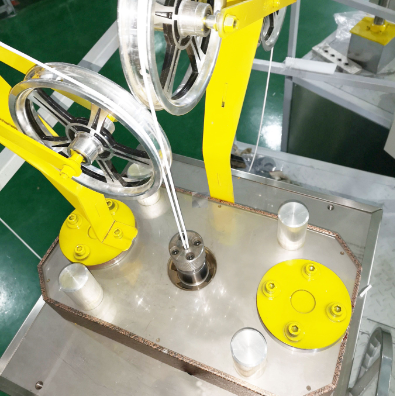Dgflon Ptfe Tube
- Phone: +86-133 6222 3656
- Email: [email protected]
Dgflon Ptfe Tube
Since many years ago, PTFE materials have assisted and empowered manufacturers. For the foreseeable future, they will continue to be the material of choice for streamlining various operations and lowering operating costs.
The PTFE paste extrusion machine, sometimes referred to as the Teflon paste extruder, produces PTFE billets by combining fine PTFE powder with additives.
This article will cover the paste extrusion procedure used to manufacture PTFE products.
Long-lasting and flexible PTFE Tubings of thin wall sections are created by Paste Extrusion Process. To help with lubrication during extrusion, hydrocarbon oil is added to PTFE resin as part of the process.
The mixture is then driven through the die at a constant rate by Ram Extruder after being lightly pressed into a billet or perform at a pressure of 25 kg/cm2.
The lubricant is then eliminated by heating and sintering to create sintered tubing in an oven at 350°C, often in a continuous long-length oven in line with paste extrusion.
This method is also used to create PTFE un-sintered ropes for gaskets, which are used to take advantage of their robust characteristics without being sintered.
PTFE flexible Tubings & Liners in continuous lengths having minimum (as low as 0.5mm) wall thickness are produced.
Paste The aligned fibers that are formed when PTFE is extruded give the extrudate excellent longitudinal tensile strength and almost negligible transverse strength.
Due to their low density, tensile strength, compressive strength, hardness, permeability, and dielectric strength, these materials are typically employed in low-pressure applications.

When compared to other materials, PTFE fluoropolymers are known for having exceptional dielectric qualities, making them the perfect choice for usage as an insulator in specific cables and connector assemblies.
When printed circuit boards are utilized at or close to microwave frequencies, it is also frequently employed as a building material. Because of this, humans have frequently been exposed to PTFE fluoropolymers without even being aware of it.
Heat shrinkable PTFE tubing constructed from Fluorinated Ethylene Propylene (FEP) is a fairly popular way to save operating costs and boost productivity, especially in complex types of industrial processes, although many maintenance managers and production engineers may not be aware of this. Manufacturing of paper, aircraft, chemicals, printing, and even industrial baking applications are common procedures.
This kind of tubing is utilized to offer an extra layer of jacketing protection to objects that will have to work in locations with high temperatures or humidity, or where sticking and process buildup are worried.
The optimum fit (and the lowest cost to the customer) can be ensured by having heat shrink tubing made to precisely match the dimensions of the relevant roller.
Overall, even though the kitchen is the application that PTFE fluoropolymers are most recognized for, it's vital to keep in mind that they are employed in a variety of other locations as well.
Please get in touch with us if you have any further questions you'd like to discuss in more depth or if you'd want to learn more about the PTFE Paste Extrusion Machine to optimize your process.